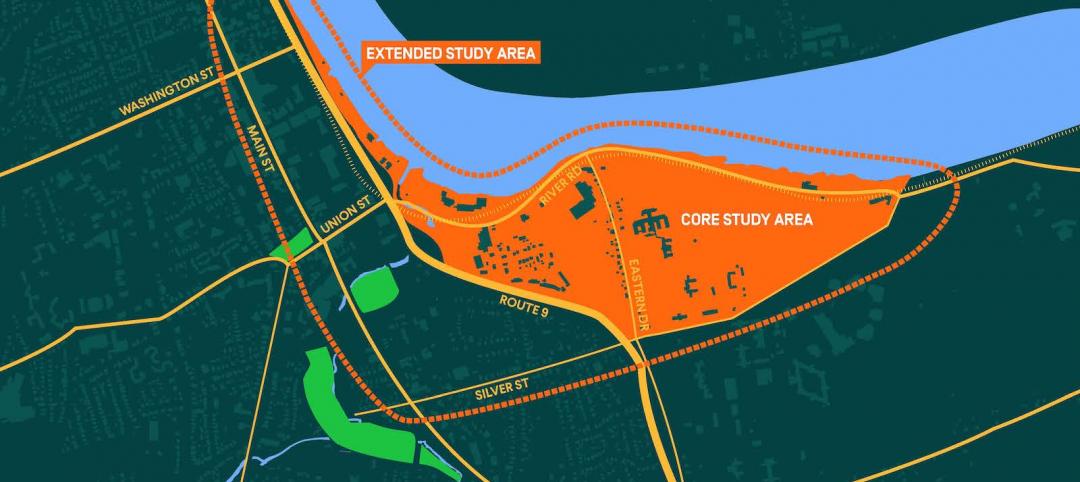At the 2015 Annual Business Meeting of the National Council of Architectural Registration Boards (NCARB), Member Boards agreed on Saturday to discontinue the current Broadly Experienced Foreign Architect (BEFA) Program in favor of a simplified alternative for receiving an NCARB Certificate.
The change, effective July 1, 2016, will optimize the process for foreign architects who are licensed but do not currently meet the requirements for the NCARB Certificate. This credential facilitates licensure among jurisdictions and signifies that an architect has met national standards for licensure established by registration boards.
“We wanted to remove some of the unnecessary financial and administrative impediments for this group by refocusing on the nationally accepted standards for licensure." —Dale McKinney, NCARB President
The new alternative for foreign licensees will replace the current BEFA Program’s requirements, eliminating the committee dossier review and the need to document seven years of credentialed practice in a foreign country. Instead, foreign architects will be required to document completion of the Intern Development Program (IDP) experience requirements and successfully complete the Architect Registration Examination (ARE) to obtain NCARB certification.
“NCARB Certification provides an important career advantage, opening up future job opportunities throughout the U.S. and providing free online continuing education,” said NCARB President Dale McKinney, FAIA, NCARB. “We wanted to remove some of the unnecessary financial and administrative impediments for this group by refocusing on the nationally accepted standards for licensure.
“By imposing the same experience and examination criteria on foreign architects as we do in U.S. architect candidates for certification, we address knowledge of U.S. codes and facility with English as the primary U.S. language,” McKinney added. “The new alternative will be more automated, increasing objectivity and helping reduce fees associated with the dossier and interview requirements.”
In other Annual Business Meeting action, a new alternative to the Broadly Experienced Architect (BEA) program fell one vote shy of getting the 28 votes needed by the Member Boards to discontinue the BEA in favor of a more simplified alternative for architects seeking an NCARB Certificate when they do not have a degree from a program accredited by the National Architectural Accrediting Board (NAAB).
The new requirements for the education alternative for certification would have required five years of post-licensure practice for all licensees without accredited education. It would also have required twice the IDP requirements for work experience for architects with a pre-professional architectural degree, and five times the IDP requirements for those with anything less than a pre-professional architectural degree.
“The split in our membership shows the proposal needs more work,” said NCARB CEO Michael Armstrong. “Our board will apply feedback from the membership toward a remodeled alternative and come back next year with a proposal that will try to capture the blend of rigor, inclusion and ease of use that is acceptable to a majority of our members.”
Related Stories
Healthcare Facilities | Apr 7, 2022
Visibility breeds traffic in healthcare design
Ryan Companies has completed several healthcare projects that gain exposure by being near retail stores or office buildings.
Multifamily Housing | Apr 7, 2022
Ken Soble Tower becomes world’s largest residential Passive House retrofit
The project team for the 18-story high-rise for seniors slashed the building’s greenhouse gas emissions by 94 percent and its heating energy demand by 91 percent.
Architects | Apr 7, 2022
Perkins Eastman, Kliment Halsband Architects to merge
Perkins Eastman and Kliment Halsband Architects have announced their merger, which will combine the formidable talents, experience, and skills of both legacy firms. With Perkins Eastman celebrating its 40th anniversary and Kliment Halsband celebrating its 50th, this merger promises to create powerful synergies.
Urban Planning | Apr 5, 2022
The art of master planning, with Mike Aziz of Cooper Robertson
Mike Aziz, AIA, LEED AP, Partner and Director of Urban Design with Cooper Robertson, discusses his firm's design for the redevelopment of a Connecticut town's riverfront.
Multifamily Housing | Apr 5, 2022
New Covenant House New York contains multiple services for youth in crisis
The new Covenant House New York, a crisis shelter for homeless youth in the Hell’s Kitchen neighborhood, provides a temporary home and multiple services for young people.
Sponsored | BD+C University Course | Apr 1, 2022
Video surveillance systems for multifamily housing projects
This introductory course provides detailed technical information and advice from security expert Michael Silva, CPP, on designing a video surveillance system for multifamily housing communities – apartments, condominiums, townhouses, or senior living communities. Technical advice on choosing the right type of cameras and optimizing the exterior lighting for their use is offered.
K-12 Schools | Apr 1, 2022
Charleston County’s award-winning career and technical education high school
BD+C Executive Editor Rob Cassidy talks with the team behind the award-winning Cooper River Center for Advanced Studies, a Career|Technical Education high school in Charleston County, S.C.
Modular Building | Mar 31, 2022
Rick Murdock’s dream multifamily housing factory
Modular housing leader Rick Murdock had a vision: Why not use robotic systems to automate the production of affordable modular housing? Now that vision is a reality.
Multifamily Housing | Mar 29, 2022
Here’s why the U.S. needs more ‘TOD’ housing
Transit-oriented developments help address the housing affordability issue that many cities and suburbs are facing.
Contractors | Mar 28, 2022
Amid supply chain woes, building teams employ extreme procurement measures
Project teams are looking to eliminate much of the guesswork around product availability and price inflation by employing early bulk-purchasing measures for entire building projects.
















